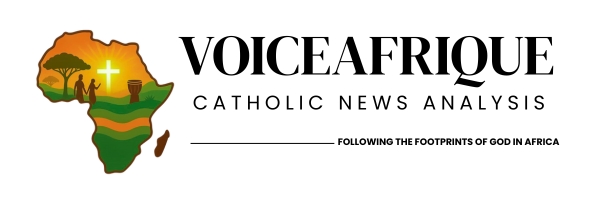What do you call a group that drags neighbors from their homes, stones them, and burns them alive—witch hunters, or political thugs? In Burundi, the line has all but disappeared.
According to Radio France Internationale (RFI), “a group of armed young men broke into the homes of around ten people late on Monday evening and dragged them out by force. The group beat them with clubs, then stoned them and burned some of them alive.”
By the time the witch-hunting killing spree ended, six people were dead, many others were injured, and several lives were only spared due to police intervention. The quiet town of Gasarara, located just ten kilometers from Burundi’s capital, Bujumbura, is known as an opposition stronghold.
The occupants of the attacked homes were accused of practicing witchcraft and blamed for a series of recent unexplained deaths in the area. However, according to RFI’s reporting, images and eyewitness accounts from the scene suggest that the perpetrators were members of the Imbonerakure, the youth militia affiliated with the ruling party, the National Council for the Defense of Democracy–Forces for the Defense of Democracy (CNDD-FDD).
Was this massacre a politically motivated witch-hunt or a misguided act of religious zealotry aimed at purging Gasarara of witches and wizards? Either way, there is no justification for such brutality. The Governor of Bujumbura Province, Désiré Nsengiyumva, denounced the attack, calling it an act of “unacceptable mob justice.”
While some arrests have reportedly been made, the identities of the perpetrators remain undisclosed. No formal investigation has been launched, nor have any suspects been charged in court. In Burundi, as in many parts of Africa, people often attribute unexplained deaths to witchcraft. But a troubling pattern persists: the so-called “witches” are frequently aligned with the political opposition.
The association of witchcraft with political dissent has become a dangerous weapon—an excuse for silencing rivals in Africa’s complex political landscape. This tactic is not new.
Archbishop Emmanuel Milingo of Lusaka, once a prominent figure in the Catholic Church, was known for his alleged ability to cast out demons. In his book Face to Face with the Devil, he recounted how numerous politicians sought his help to free themselves from spiritual pacts they had allegedly made with witches, wizards, or Satan in pursuit of power, wealth, and protection.
Instances of sorcery and superstition are woven into African political culture. In Kenya, former President Daniel arap Moi established a Presidential Commission on Devil Worship and Witchcraft—an initiative publicly endorsed by religious leaders, including the Catholic Church. Although the commission’s findings were never released, Moi was quick to accuse the opposition of consorting with witch doctors and “satanists.”
But a deeper analysis of Kenya in the 1990s reveals that the proliferation of witchcraft accusations coincided with the worsening conditions of life under Moi’s authoritarian regime. As scholars Aylward Shorter and Joseph Njiru observed, the commission on demon worship served to distract the public from the root causes of their suffering: economic inequality, government corruption, and the erosion of social structures during the HIV/AIDS crisis.
They wrote: “In a situation in which more than a quarter of the population does not have enough to live on, and a tiny elite is rich beyond the dreams of avarice, it may well appear that affluence is diabolical.” The paranoia created by such commissions, they argued, reflects the moral bankruptcy of the ruling elite—not supernatural malevolence. The real threats to the people were not witches, but poverty, insecurity, trauma, and exploitative governance.
Belief in witchcraft and sorcery remains strong across Africa. Pew Research surveys conducted in 2010 and 2015 found that a majority of Africans—many of whom also identify as devout Christians or Muslims—believe in witchcraft, evil spirits, ancestral sacrifices, traditional healers, reincarnation, and other elements of African traditional religion.
The 2015 Pew report noted an uptick in violent attacks against people suspected of practicing traditional beliefs. In Tanzania, for example, over 50 people were killed between January and June of that year due to accusations of witchcraft. In the Democratic Republic of Congo, churches conducted exorcisms on children accused of being witches, subjecting them to starvation, beatings, and abuse.
In some countries, people practicing witchcraft were the perpetrators of violence. In Malawi and Tanzania, the body parts of people with albinism were harvested for use in witchcraft rituals. In 2015, Malawi recorded 19 cases of abuse—including eight murders—linked to this grisly practice. In Tanzania, several people with albinism were abducted, and at least one child was reportedly killed early that year.
As the people of Gasarara grieve and bury their dead, African societies—especially churches, academics, and theologians—must reflect more deeply on the persistent belief in witchcraft. Why do such beliefs endure? Why are attacks on alleged witches increasing? Why do political leaders resort to witchcraft accusations to undermine their opponents?
More importantly, how can societies rebuild trust, address the root causes of fear and suspicion, and develop a holistic approach to understanding diseases, healing, and healthcare systems for addressing the root causes of the so-called unexplained deaths without resorting to scapegoating innocent people or mob violence?
We must recognize that the true “bloodsuckers” in many communities are not witches, but the systemic poverty, trauma, corruption, wounded memories, mistrust, broken relationships, and a failed, extractive, and transactional leadership in our societies that often prey on the vulnerable.


1 comment
Nice job